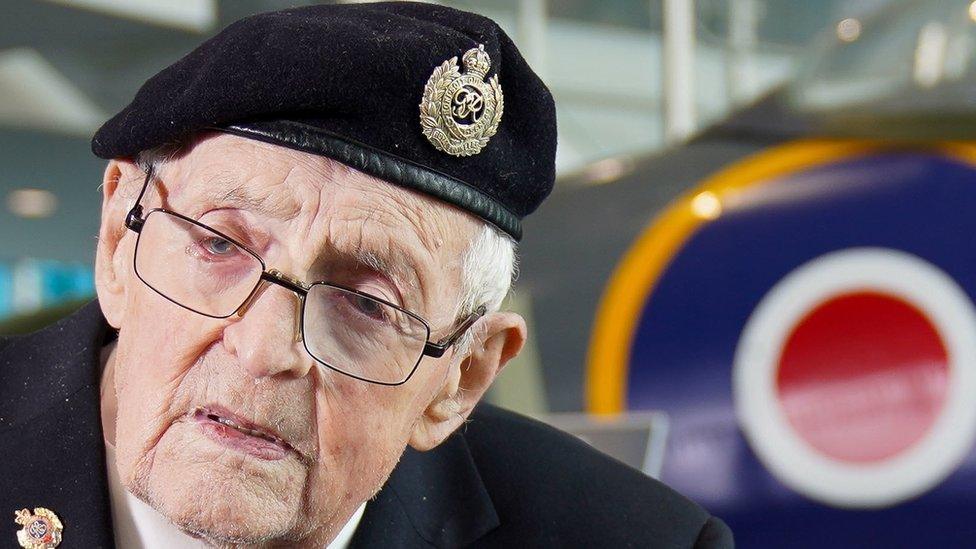Cold War nuclear bomber goes on display at IWM Duxford
- Published
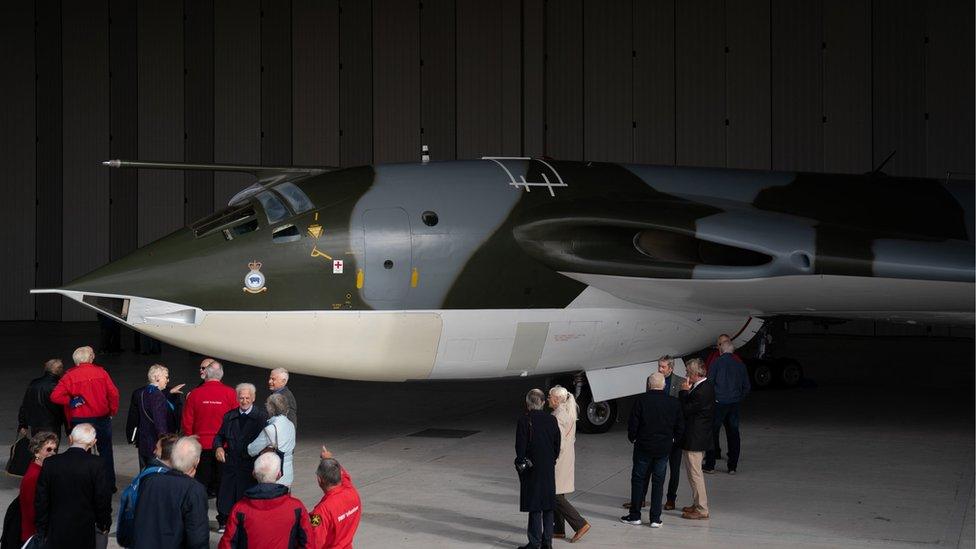
Jon White, head of conservation at IWM Duxford, said the Handley Page Victor XH648 looked looked futuristic, even now
A plane that was once capable of carrying a nuclear bomb during the Cold War has gone on display following a five-year restoration project.
The Handley Page Victor, which has a wingspan of 110ft (33.5m), is the only surviving B1 type, having taken its first flight in 1959.
It can now be seen at Imperial War Museum (IWM) Duxford, Cambridgeshire.
Sqn Ldr Garden "Gary" West, 83, who flew the plane, said: "I'm thrilled to bits to see it again like this."
The Cold War is the name given to the period of political and military tension after World War Two, when the competing ideologies of the US/western European NATO alliance and the east European Soviet bloc led to the accumulation of nuclear weapons on both sides.
It ended as the Soviet system collapsed in the late 1980s/early 1990s.
"All through the Cold War we were there to go if necessary," added Sqn Ldr West, who flew the plane as a bomber and as a tanker during his time in the RAF.
"But we didn't go, so we won from that point of view.
"We did exactly what we were there for."
The IWM said the plane was one of six B.1A Victors converted to be a 2-point tanker. While there were other types of Victor in existence, they were all 3-point tankers.
The museum said the Duxford Victor was unique because it still had its full bomb bays.
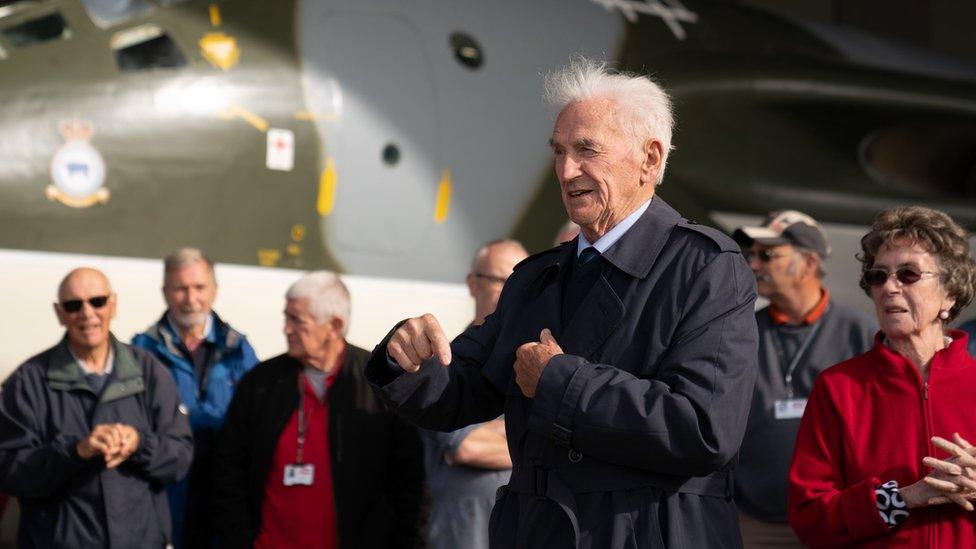
Former Gp Capt Alistair Sutherland, 89, said conditions inside were "pretty cramped"
The veteran RAF airman, who lives near Oakham in Rutland, said: "I think the memories really were just the excitement of flying a big aeroplane as I came straight from training on to Victors.
"This particular mark of aircraft was very good."
He described the restoration as "fantastic", adding: "It means a lot to us."
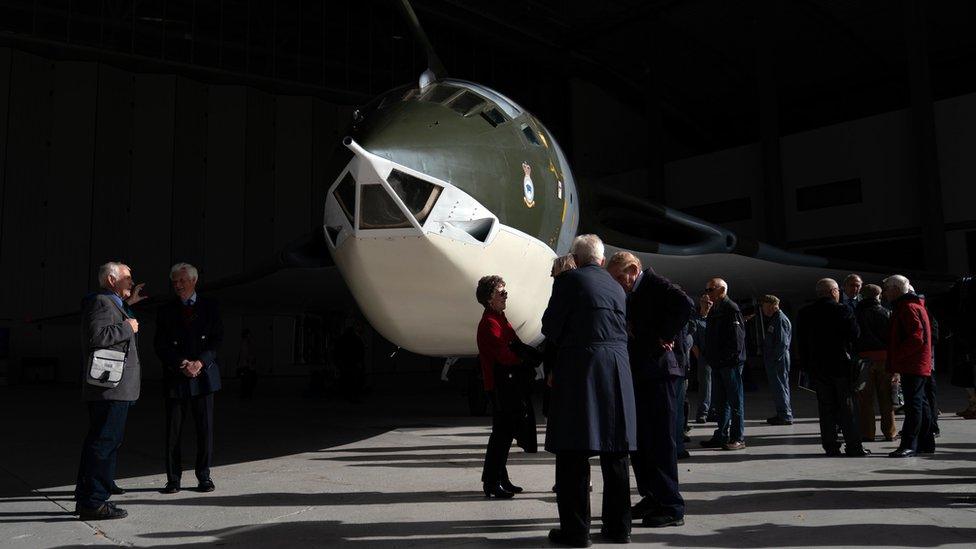
Cold War veterans, many of whom operated or worked on the aircraft, viewed the Handley Page Victor XH648 up close
Former Grp Capt Alistair Sutherland recalled serving as a navigator.
The 89-year-old, of Fakenham in Norfolk, said there would be two navigators and an electronics officer in the back of the plane, and a pilot and co-pilot at the front.
"It was very cramped but you were all pretty busy, so it worked out pretty well and we were all friends and especially if you went overseas we had some good nights abroad," he said.
'Totally unique'
Jon White, head of conservation at IWM Duxford, said the restored Handley Page Victor XH648 was "the only one".
"There were only ever six of this particular one made and this is the last surviving one," he said.
"That's why the museum has spent such a long time on it.
"It's a totally unique aircraft and shows a really interesting part of British aviation history.
"It was one of three aircraft designed to be Britain's first nuclear bombers.
"It's kind of an iconic aircraft for its shape; it was so futuristic and even now it does look futuristic for an aircraft."
The restoration saw some parts removed altogether with new parts made to replace them, and was one of the largest projects ever undertaken by the museum.

Find BBC News: East of England on Facebook, external, Instagram, external and Twitter, external. If you have a story suggestion please email eastofenglandnews@bbc.co.uk, external
Related topics
- Published15 August 2022
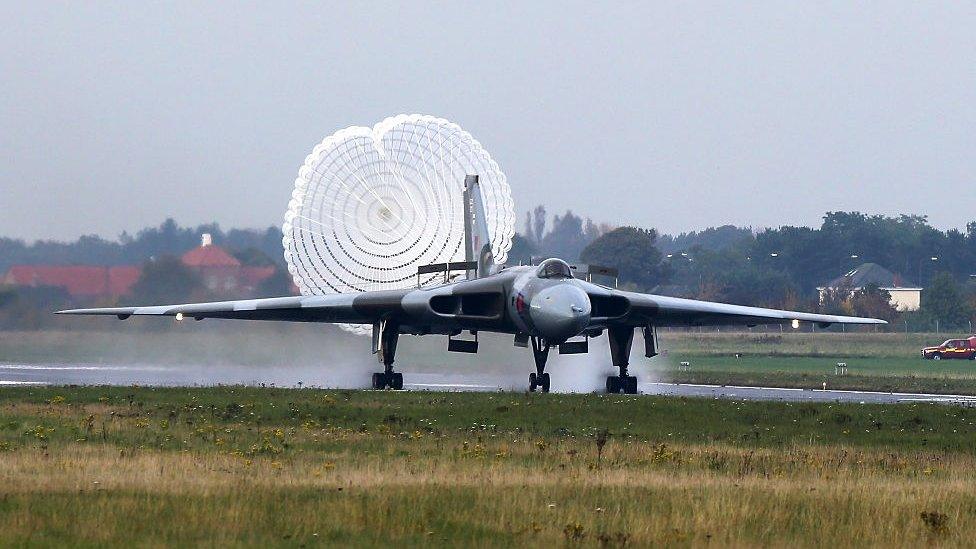
- Published3 February 2022
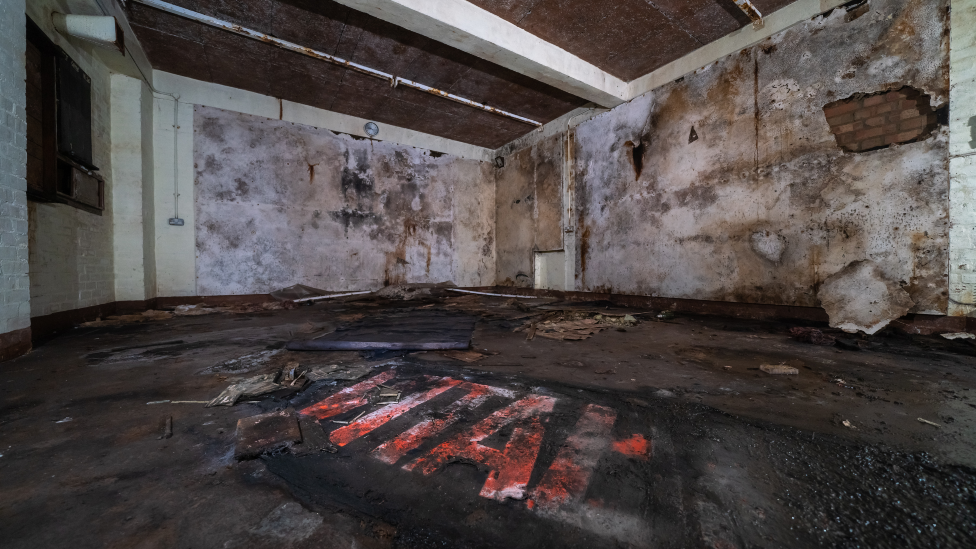
- Published15 September 2021
